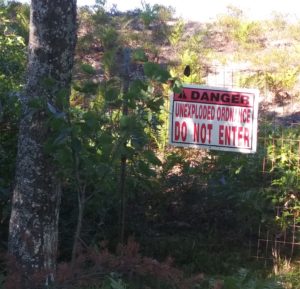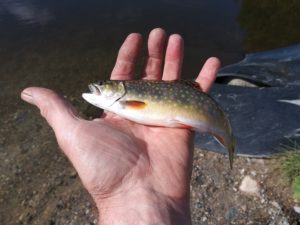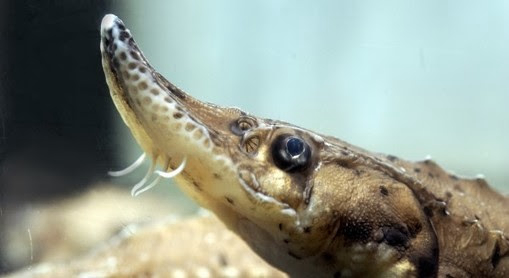By Glen Wunderlich
“There’s no fish in here,” was the conclusion of my great grandson, 9 year-old Landon, after casting lines into the Looking Glass River for an hour or so this past spring. The trouble was that I couldn’t convince him otherwise. This time, however, when he was to visit, I was hoping to find a quiet place on a lake where we could participate in more than a worm-drowning exercise.
The lake selected was Woodland Lake – an all-sports, public access lake in Livingston County about 45 miles from our home in Shiawassee County. Quiet it is not during most any summertime weekend. In fact, I thought it might be a bit too large and busy for my tidy little 10-foot jon boat; that’s exactly why the plan was to be on the water by 6:30 am Monday.
Having never fished the lake, I was happy to learn from the lake’s only marina owner/operator, Mike, that Monday mornings are about as peaceful as it gets on this body of water. I didn’t have the time or inclination to dig our own worms, figuring they’d have tunneled half way to China during the heat we’ve experienced recently. Fortunately for us, worms and night crawlers are about as readily available at many gas stations as the fuel they offer.
The day before the fishing trip, Landon practiced casting a small weight with an open-face reel of mine and picked up the technique quickly. The boat and gear were then loaded into the truck on Sunday and by 5:30 am the following morning we were on the road. The sun had turned the scant clouds red, as it made its glorious entrance on the horizon.
The calm and inviting water made for the perfect setting. No other boats were present; we had the lake to ourselves.
The bobber was set about 4 feet above the small sinker and hook – deep enough to make it difficult to cast for a novice, so I took on the task for the youngster. Although pike were among the species regularly caught in the lake, I didn’t want to fish with steel leaders; if one took our bait, it would just have to snap the 4-pound test line. I figured the young man would be happy fighting some bluegills – and, he was.
We pulled them in one after the other. We weren’t getting anything large enough to keep for a fish fry, but the action was so fast that it was all I could do to keep bait on Landon’s line. In the meantime, I’d cast some top-water lures and some small spinners but it produced nothing more than lake weeds. But, weeds are good, as Landon learned.
One after the other, the boy who had never fished in a lake from a boat was occupied with non-stop action. But, then it happened. I couldn’t help but notice the severely bent rod and Landon’s struggle to turn the handle on the ultra-light reel. It was all he could do to hang on, as I reached for the landing net in anticipation of something big. I saw the fish’s reflection under water and recognized it as a large mouth bass and a good one at that!
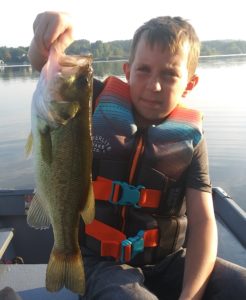
Landon’s first Large Mouth Bass
Once in the boat, I took some pictures and set the fat fish free in short order. The kid had landed the biggest fish of his life and took it in stride. I didn’t measure it but it was certainly over the minimum 14 inch length – a good catch for anyone.
A few more bluegills and a lake perch and things were back to normal. And, then it happened again. Another big bass had struck Landon’s night crawler and it was instant replay time. A lunker bass, some photos, and the prize was releaed into the water. Ho hum.
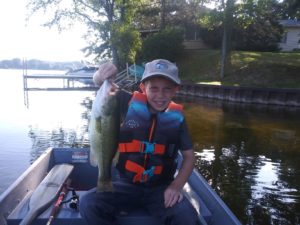
Landon’s second big Bass
I don’t know how many fish were landed that morning but there was one more giant hooked. This one, however, had the fortune to give us the slip in the weeds. By now, the sun was heating up the air and after about 4 hours of non-stop action, we agreed that we had had enough fun.
We never got more than 100 yards or so from shore making for a simple adventure. Although city life was all around us, we had found the serenity within – a mundane Monday morning for many but not for us.
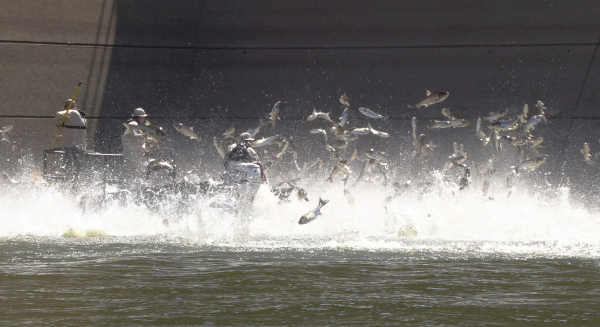


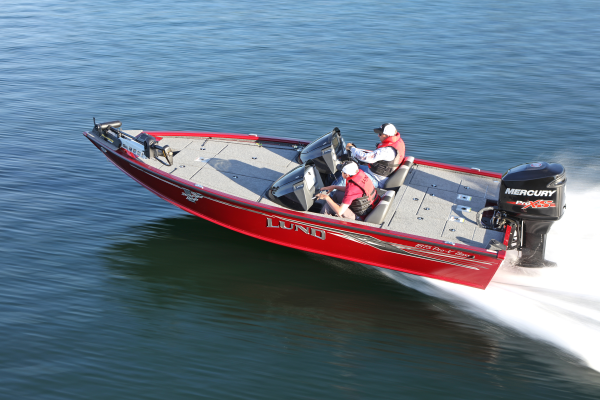

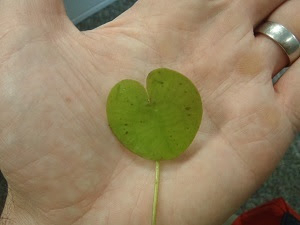
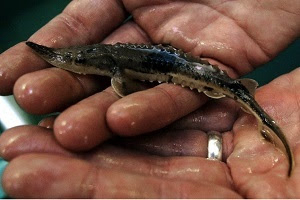




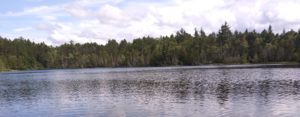 The launch site was perfect with not one other person on the water. I pulled in a few pan fish including one sizeable rock bass. It was as if I had my own private lake.
The launch site was perfect with not one other person on the water. I pulled in a few pan fish including one sizeable rock bass. It was as if I had my own private lake.